Did you know Nasturtium Seeds are edible? In fact, Nasturtium leaves and Nasturtium flowers are also edible! This Nasturtium Recipe will show you how to make your own "Poor Man's Capers" by pickling the Nastrutium seeds in brine. Pickled Nasturtium pods can be used as a substitute for capers in many recipes, including my dill potato salad recipe.
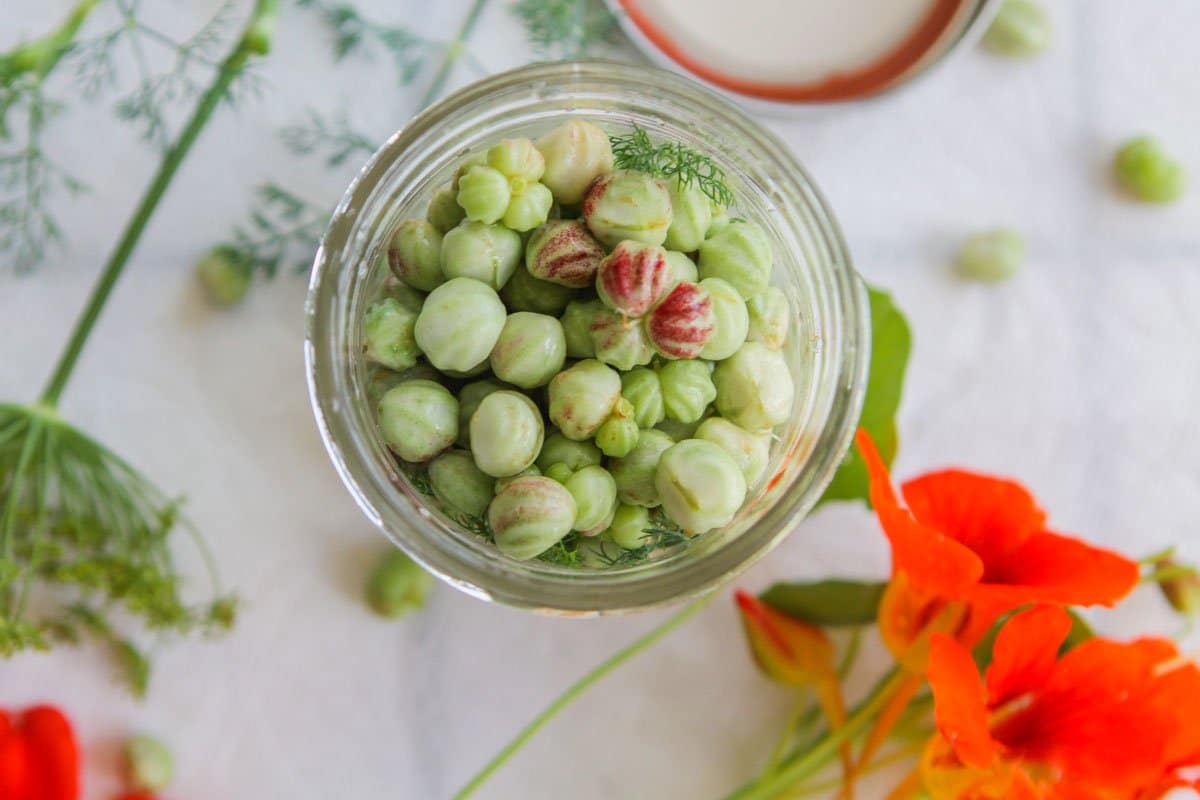
If you are a fan of capers, you will love pickled nasturtium seeds even more! I still remember the first time I learned that Nasturtium flowers are edible. It was many years ago, while my mother-in-law, was visiting us for the summer from Arizona.
Marlene mentioned that nasturtium flowers were edible and could be added to salads. The flowers have a spicy, peppery flavor. Since then, I've learned that not only are the flowers edible, but practically the entire plant. Nasturtium leaves are also slightly peppery and spicy and have many culinary uses!
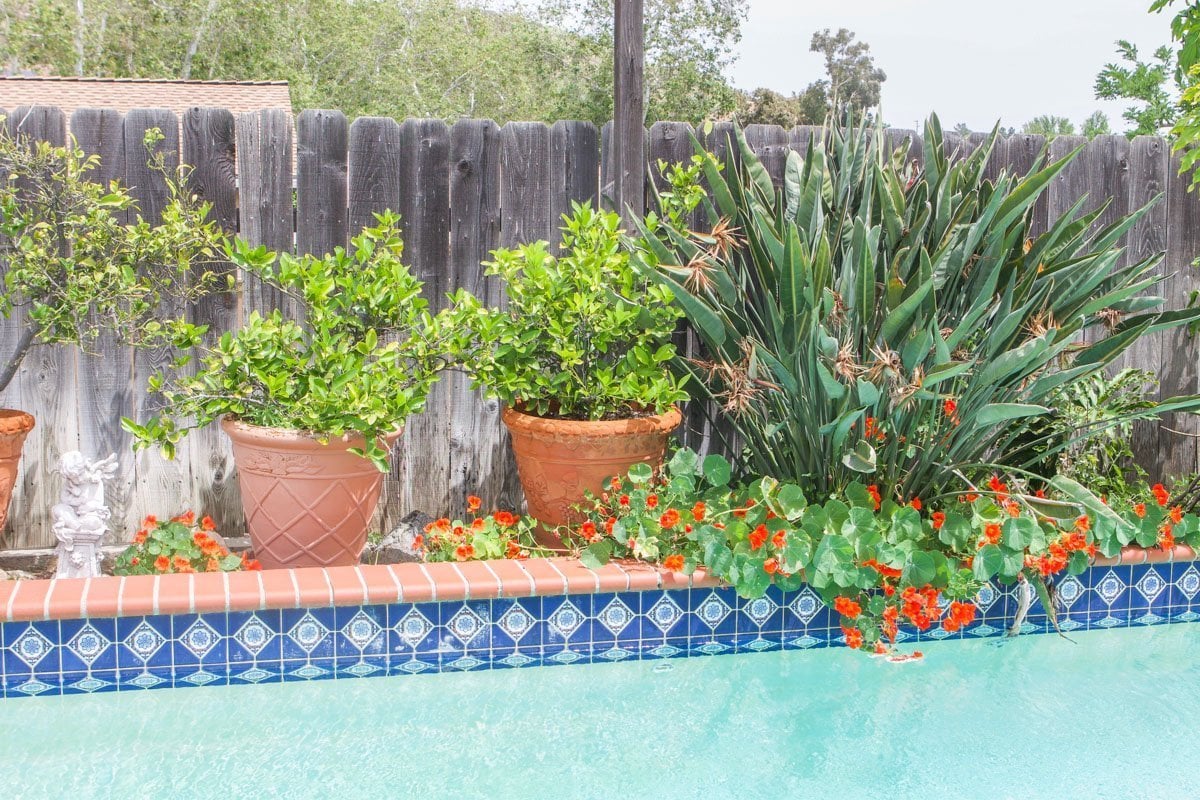
Jump to:
😍 Why You'll Love This Recipe
The Nasturtium Plant is gorgeous and easy to grow if you're in the right climate. And if you are lucky enough to grow this plant, there are so many Nasturtium recipes that you can create using the various parts of the plant. This includes the nasturtium flowers, leaves, and seeds/pods!
This nasturtium recipe is a great way to utilize the plant's peppery seeds by pickling them in the same way you would make zesty refrigerator dill pickles or any other vegetable.
If capers had cousins, it would be nasturtium seeds. Nasturtium seeds taste very similar to capers, but unlike their expensive cousins, nasturtium seeds are free for the picking! So why wouldn't you use them to make these tasty, mock capers?
🛒 What You Need to Make This Recipe
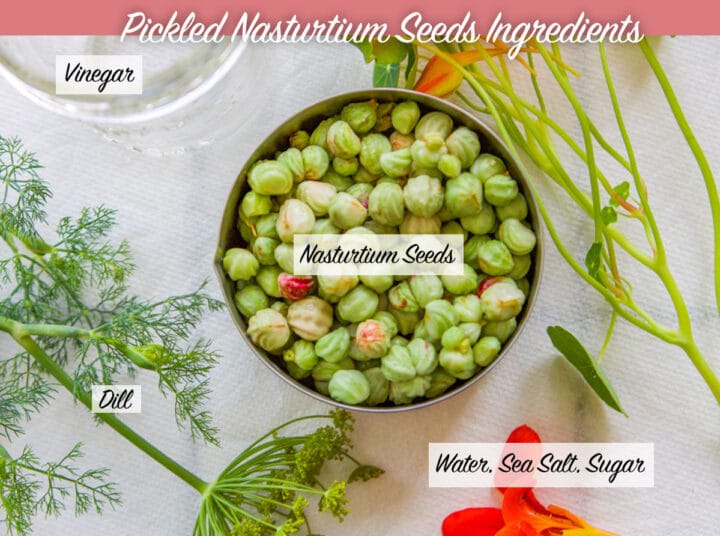
🫙 How to Make Pickled Nasturtiums
Step 1: Pick nasturtium seeds from nasturtium plants in spring or summer.
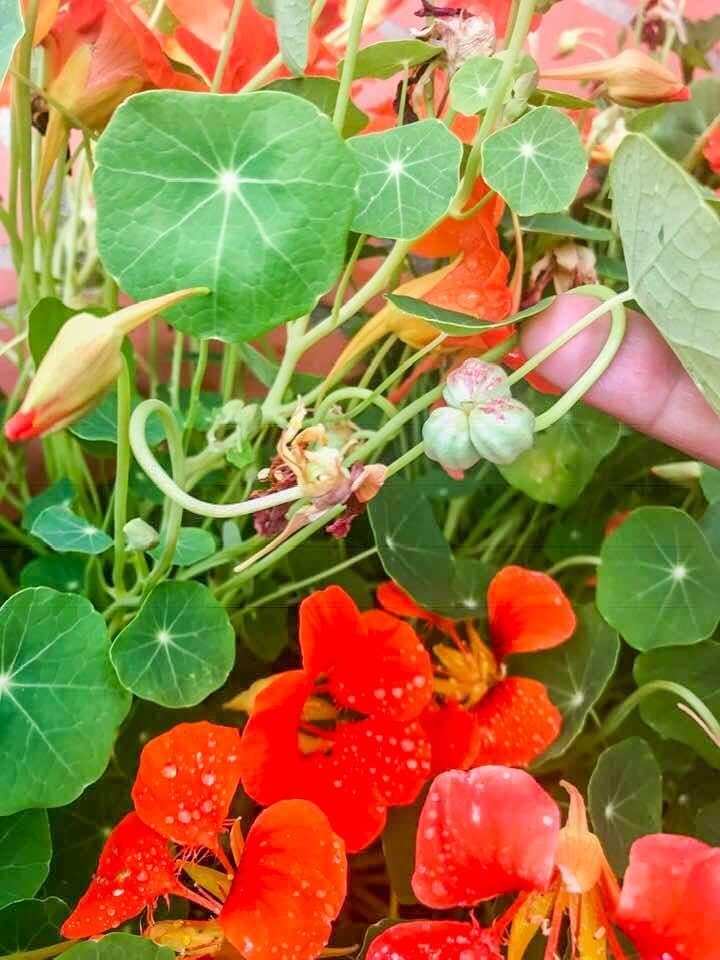
Step 2: Place nasturtium seeds into a bowl of cold water and swirl them around to remove dirt and debris. The dried stems and flowers will float to the surface.
Would you like to save this recipe?
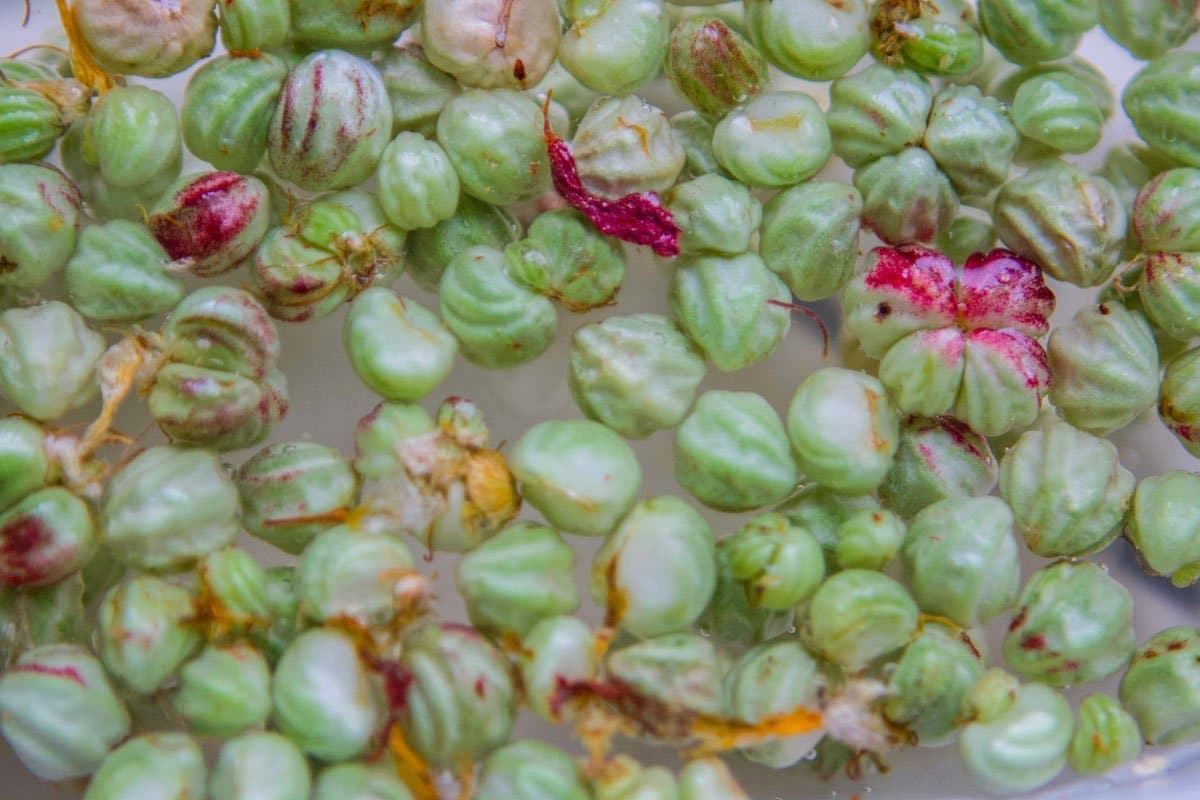
Step 3: Add clean pods to an 8-ounce pickling jar. Fill a small saucepan with water, vinegar, salt, and sugar, and bring to a boil. Add a few sprigs of fresh dill to the jar, then pour the pickling solution over the pods.
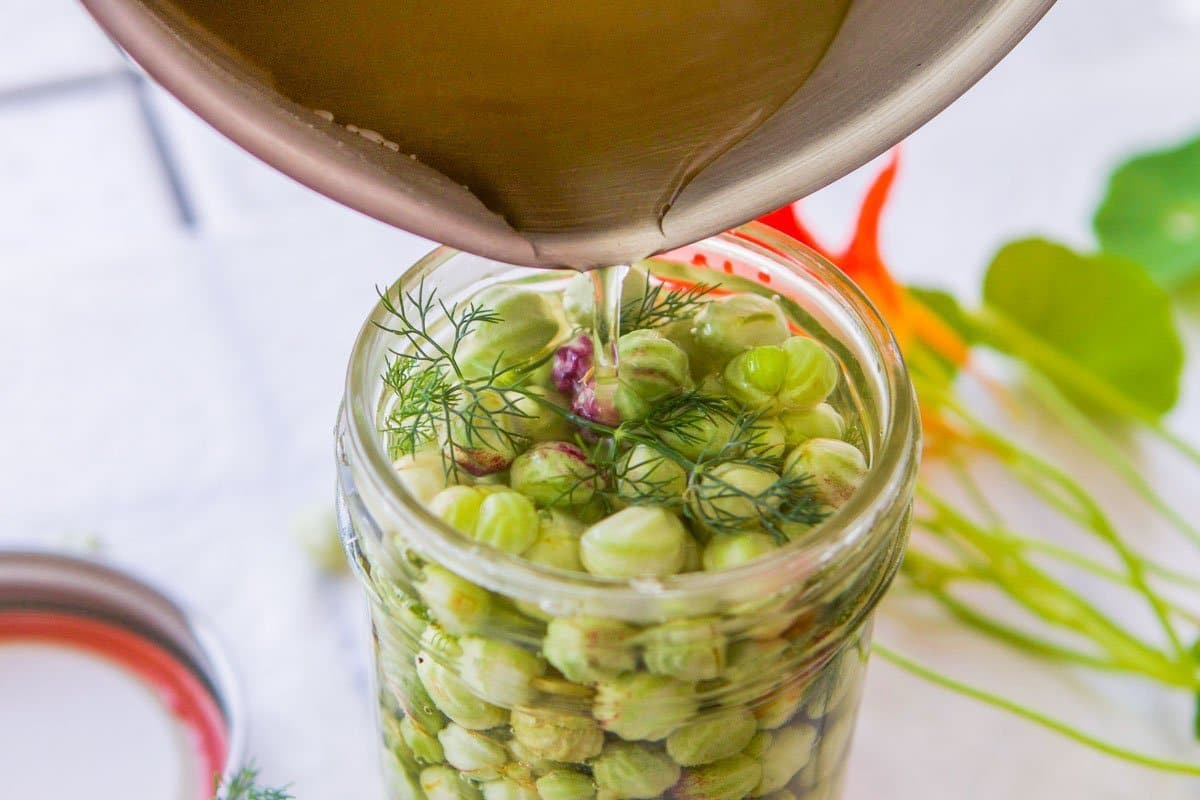
Step 4: Seal and place in a dark, cool, spot. Allow to pickle for at least one to two weeks. Store in the refrigerator after that.
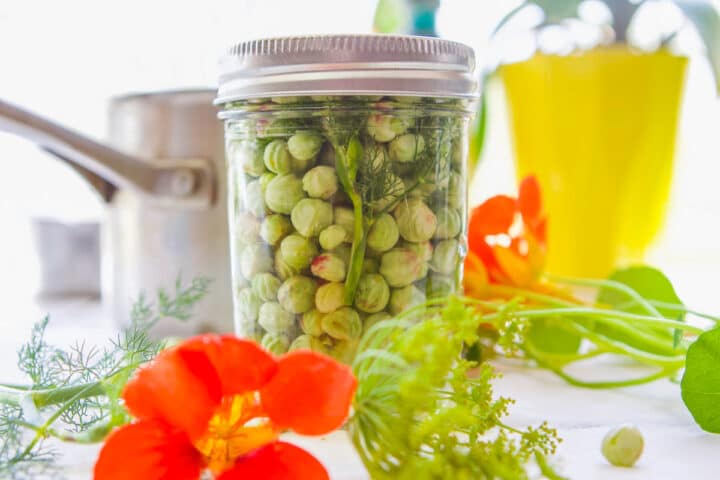
🍽 How to Enjoy Pickled Nasturtium Seeds
As I mentioned earlier, Pickled Nasturtium Seeds can be used as an alternative to capers in most recipes. Here are some ways to enjoy edible nasturtium seeds:
- Use pickled nasturtium seeds on bagels and lox instead of capers.
- Add nasturtium seeds to creamy pasta dishes.
- Use pickled nasturtium seeds as a topping for Keto Deviled Eggs.
- Add a handful of the poor man's capers with chickpeas when making Lebanese Hummus.
- Toss a handful of pickled nasturtium seeds in this roasted beetroot salad to add texture and a little spice.
- Add nasturtium seeds to dill potato salad, the flavors are like a marriage made in heaven.
🤷🏻♀️ Recipe FAQs
Capers are the buds of the plant "Capparis Spinosa." Capers are not seeds, but unopened flower buds that are picked before maturing. The buds are then dried and brined.
The entire Nasturtium plant is edible and can be incorporated into many recipes! Nasturtium flowers are edible and can be used in salads, jams, or to flavor vinegar. Nasturtium flowers can also be stuffed with cream cheese or other spreads. Finally, the flowers are perfect for decorating cakes like this Loquat Cheesecake or adding to a salad.
Nasturtium leaves can be used in place of basil to make pesto. The larger leaves can be used instead of grape leaves in this grape leaf dolma recipe. Nasturtium leaves can even be added to a sandwich if you're out of mustard, they have a similar flavor!
Finally, Nasturtium Seeds are also edible and when pickled, comparable to capers. Dare I say, even better?
👩🏼🍳 Pro Tips
- If you think you might find the flavor too strong, brine the seeds in a mixture of two cups of water and ¼ cup salt for 3 to 5 days. Rinse the seeds and continue with the recipe steps.
- The extra brining time mellows out the flavor, but I personally prefer the strong flavor.
- Pickle the nasturtium seeds for at least 2 weeks; longer would be even better.
- Store pickled nasturtium seeds in the refrigerator for up to 6 months.
- If pressure canning, pickled nasturtium seeds can be stored in a cool, dark location for up to a year.
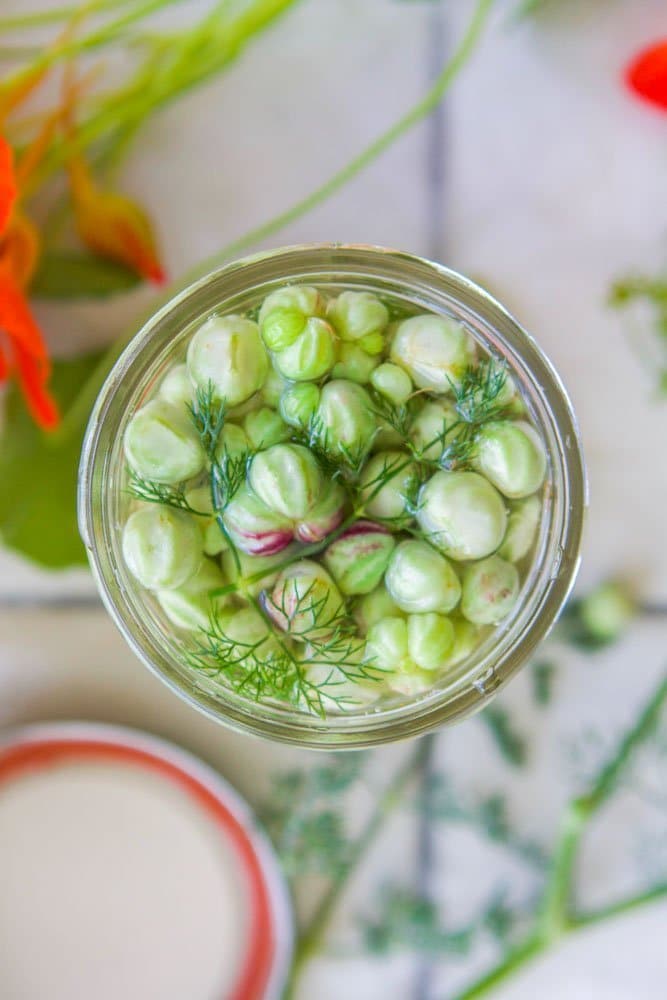
🌶 Related Recipes
📖 Recipe
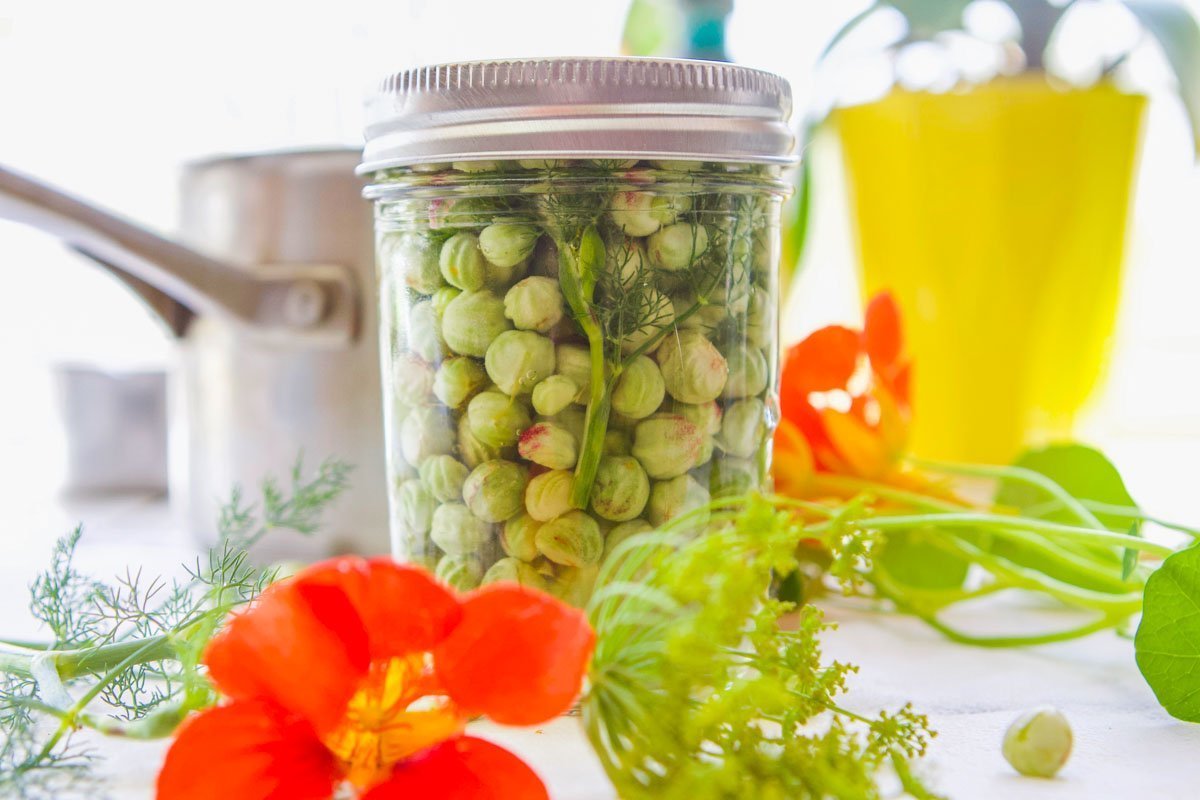
Pickled Nasturtium Seeds
Ingredients
Equipment
Method
- Pick nasturtium seeds from nasturtium plants in spring or summer.
- Place nasturtium seeds into a bowl of cold water and swirl them around to remove dirt and debris. The dried stems and flowers will float to the surface.
- Add clean pods to an 8-ounce pickling jar. Fill a small saucepan with water, vinegar, salt, and sugar, and bring to a boil. Add a few sprigs of fresh dill to the jar, then pour pickling solution over the pods.
- Seal and place in a dark, cool, spot. Allow to pickle for at least one to two weeks. Store in the refrigerator after that.
Nutrition
Notes
- If you think you might find the flavor too strong, brine the seeds in a mixture of two cups water and ¼ cup salt for 3 to 5 days. Rinse the seeds and continue with the recipe steps.
- The extra brining time mellows out the flavor, but I personally prefer the strong flavor.
- Pickle the nasturtium seeds for at least 2 weeks, longer would be even better.
- Store pickled nasturtium seeds in the refrigerator for up to 6 months.
- If pressure canning, pickled nasturtium seeds can be stored in a cool, dark location for up to a year.

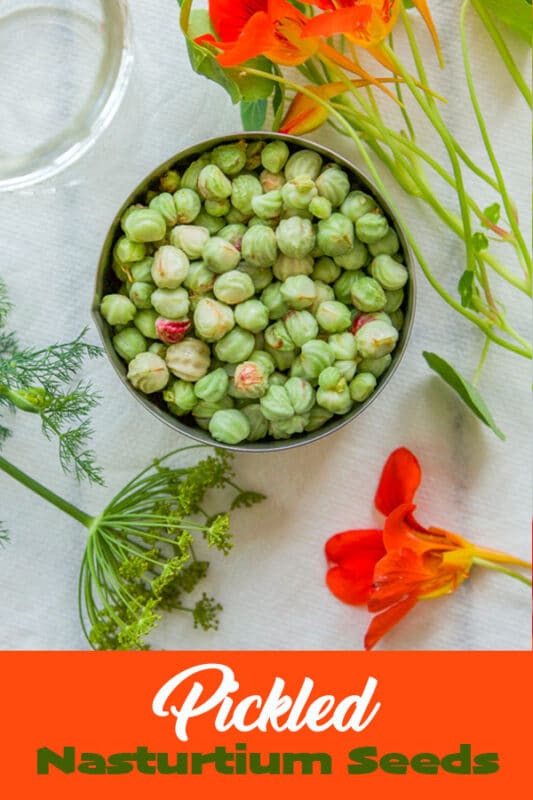
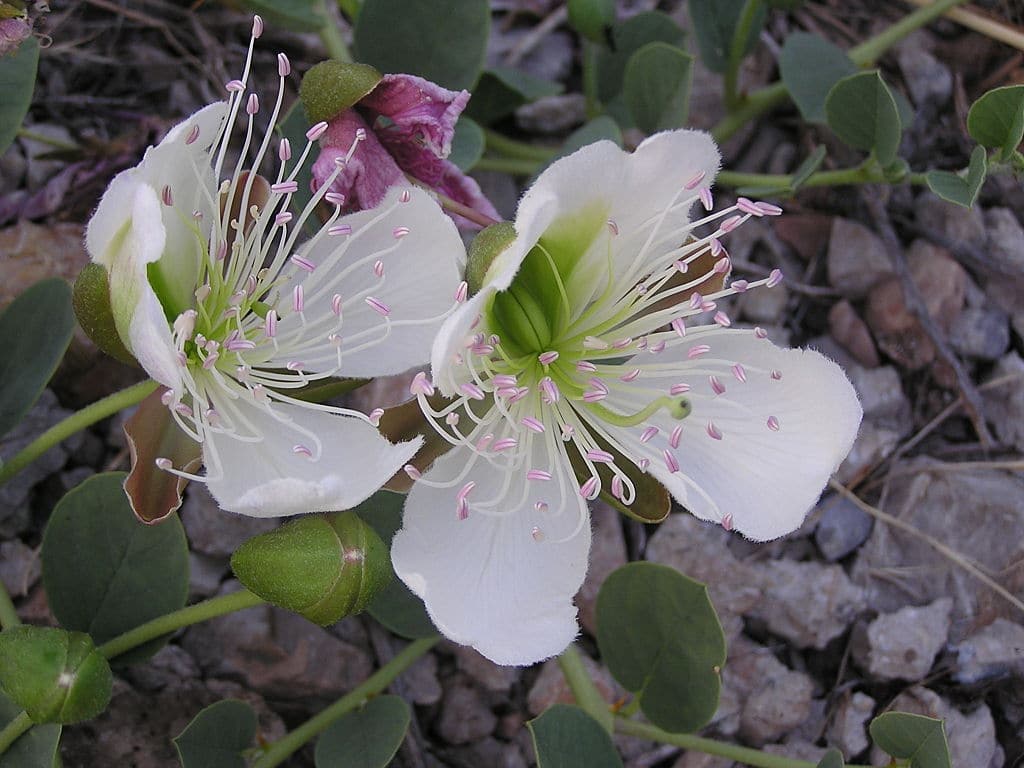
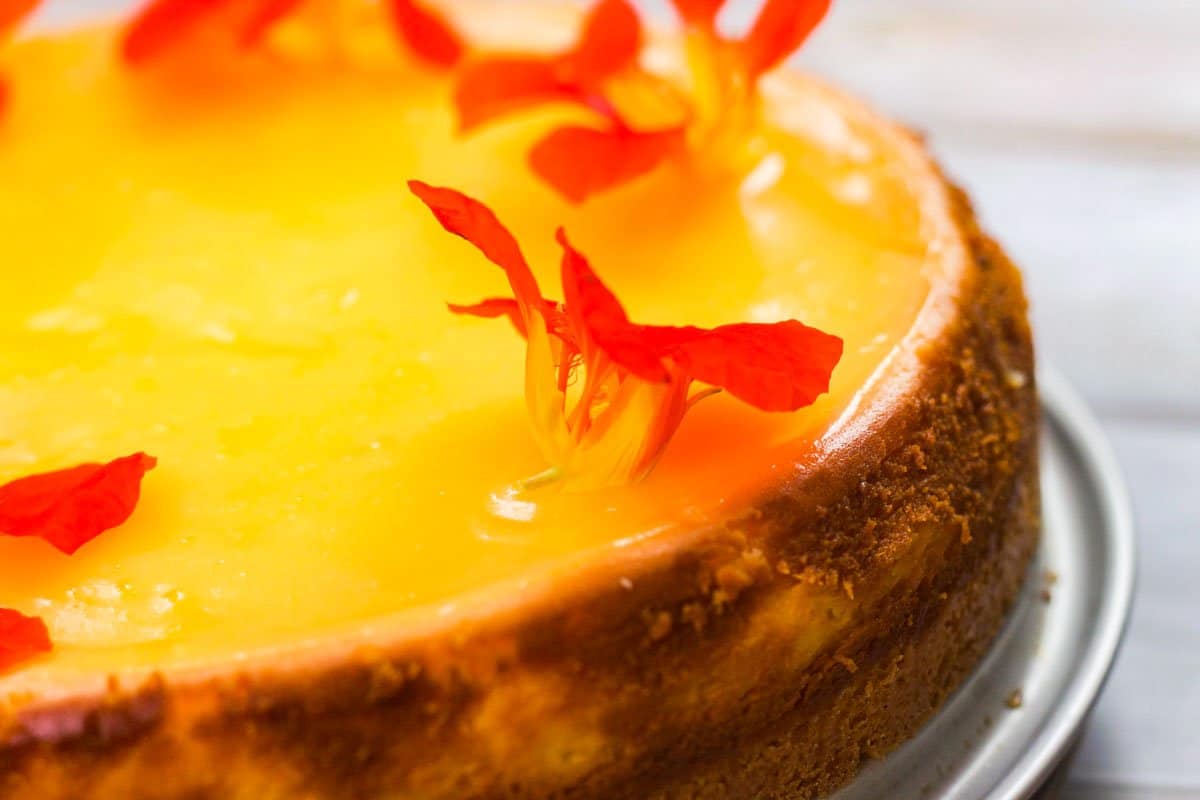
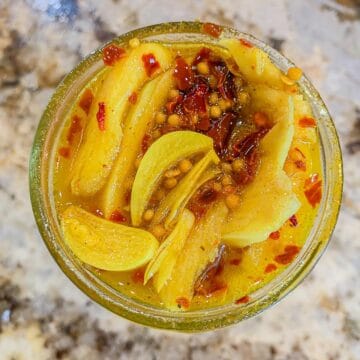
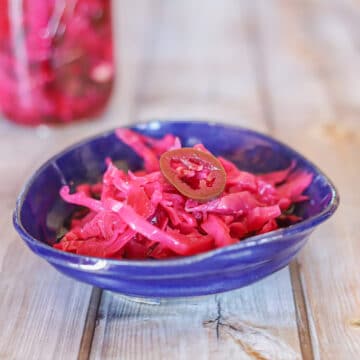
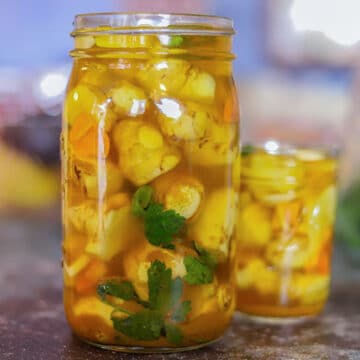
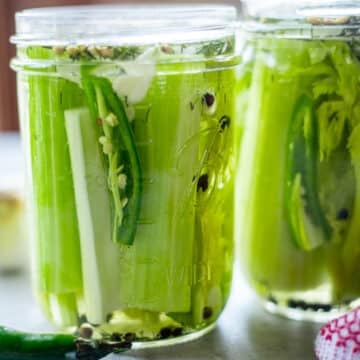
Terri Rooney says
Since introducing nasturtiums into our garden as a pest deterrent and occasional salad addition, I’ve been fighting their invasive tendency, but thanks to your recipe, no more! I started gathering the seeds in late spring, and pickled my first batch with your recipe after 24 hours of brining. Wonderful! Have always enjoyed capers, but now that I’ve tasted pickled nasturtium seeds, I will only use capers as a 2nd choice. I found their subtle pepper flavor and crunchiness far superior, and have been sharing your recipe with friends! Thank you Hilda!
Hilda Sterner says
Thanks, Terri, I had a dear friend named Terri Rooney. You're not THEE Terri Rooney, my Navy buddy, are you?